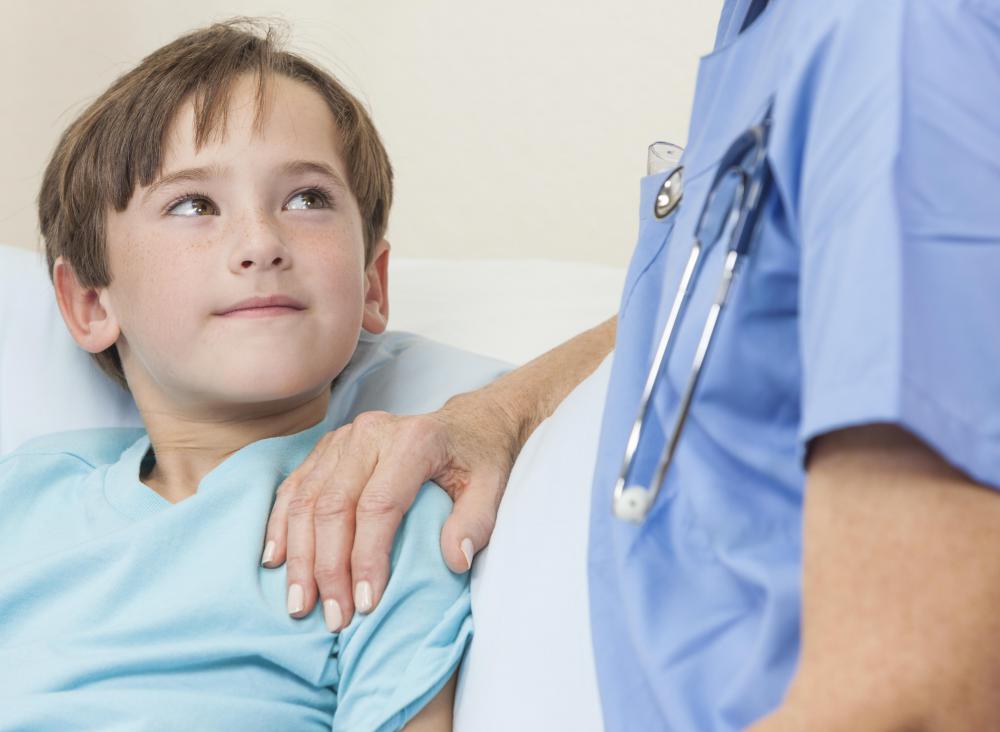At WiseGEEK, we're committed to delivering accurate, trustworthy information. Our expert-authored content is rigorously fact-checked and sourced from credible authorities. Discover how we uphold the highest standards in providing you with reliable knowledge.
How is a Growth Plate Fracture Treated?
When a growth plate fracture is diagnosed, the recommended treatment depends on the severity of the fracture. Minor injuries can be treated by applying a splint or a cast. Where the damage is more severe, surgery may be needed. When a fractured growth plate is diagnosed, the child will need to have follow-up visits with the doctor at regular intervals for a couple of years following the injury.
The growth plate refers to the portion of a bone that is still growing. It is located at the end of the bone, and can be vulnerable to injury since it is weaker than the full-formed portions of the skeleton. If the injury is not treated properly at the time, the bone may not grow straight afterward. The bone may be shorter than the corresponding one on the other side of the body.

In some cases, a growth plate fracture can resemble a sprain or a strain. When children are complaining about pain following an injury, they should be seen by a doctor to rule out this type of issue. Given the risk of permanent damage, it's not a good idea to encourage a child to continue to put weight on an injured joint or to encourage him or her to "play hurt."

A doctor may suspect a growth plate fracture if a physical exam indicates the area is tender to the touch. An x-ray will provide more information and confirm whether a gap is present between the growth plate and the fully-formed bone. A fractured growth plate is most likely to occur in the developing bones of the hands and wrists. This type of injury can also affect the bones in the feet, ankles and hips.

If surgery is recommended, the child will probably be referred to an orthopedic surgeon. During the procedure, the doctor will reposition the growth plate in the right position and uses screws or wires to hold it in place. A cast will be put on the area to keep the bone immobile while it heals. If the fracture is of the ankle, leg or foot, the child will be instructed to avoid putting weight on it until the cast is ready to be removed.

Regular follow-ups are an important part of treating a growth plate fracture. The doctor will want to see the child every three to six months to make sure the bone is healing well and is growing straight. By the two-year point following the injury, the fracture of the growth plate should no longer be a health concern.
AS FEATURED ON:
AS FEATURED ON:














Discussion Comments
Where on the feet will a growing plate fracture hurt?
Post your comments